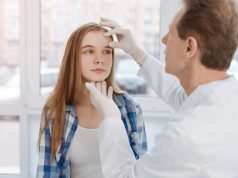Patients use a mean of 8.7 tablets, only 40 percent of the number prescribed after rhinoplasty
MONDAY, Nov. 13, 2017 (HealthDay News) — Patients use a mean of 8.7 of the initially prescribed 20 to 30 hydrocodone-acetaminophen combination tablets after rhinoplasty, according to a study published online Nov. 9 in JAMA Facial Plastic Surgery.
Sagar Patel, M.D., from Facial Plastic Surgery Associates in Houston, and colleagues examined opioid use among 62 patients who underwent rhinoplasty from February to September 2016. They assessed opioid use, pain control, and adverse effects.
The researchers found that the patients used a mean of 8.7 of the initially prescribed 20 to 30 hydrocodone-acetaminophen combination tablets (40 percent of those prescribed). Seventy-four percent of patients consumed 15 or fewer tablets, and only three patients needed pain medication refills. There was no correlation for sex, age, concurrent septoplasty or turbinate reduction, use of osteotomy, and history of rhinoplasty with the number of tablets used. Drowsiness, nausea, light-headedness, and constipation were the most common adverse effects (35, 11, 5, and 5 percent, respectively).
“To mitigate the misuse or diversion of physician-prescribed opioid medications, surgeons must be steadfast in prescribing an appropriate amount of pain medication after surgery,” the authors write. “A multifaceted pain control program is proposed to manage postoperative pain and ascertain the balance between controlling pain and avoiding overprescribing narcotics.”
Copyright © 2017 HealthDay. All rights reserved.








